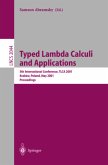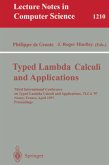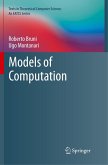This modern introduction to the physics of superconductors was edited by Paul Müller, (Walter Schottky Award for Solid-state Research) and Alexey V. Ustinov, both at the University of Erlangen. The revised and enlarged text is based on a lecture course given by V. V. Schmidt at the Moscow Institute of Steel and Alloys. It provides a modern treatment of the physics of superconductors with special attention paid to the physical interpretation of the phenomena. This English edition has been enlarged by the inclusion of such new developments as high-temperature superconductivity, and, as such, is the most up-to-date textbook available on the subject. Numerous problems with solutions help the student to become familiar with this field.
The A-calculus was invented by Church in the 1930s with the purpose of sup plying a logical foundation for logic and mathematics [25]. Its use by Kleene as a coding for computable functions makes it the first programming lan guage, in an abstract sense, exactly as the Thring machine can be considered the first computer machine [57]. The A-calculus has quite a simple syntax (with just three formation rules for terms) and a simple operational seman tics (with just one operation, substitution), and so it is a very basic setting for studying computation properties. The first contact between A-calculus and real programming languages was in the years 1956-1960, when McCarthy developed the LISP programming language, inspired from A-calculus, which is the first "functional" program ming language, Le., where functions are first-dass citizens [66]. But the use of A-calculus as an abstract paradigm for programming languages started later as the work of three important scientists: Strachey, Landin and B6hm.
The A-calculus was invented by Church in the 1930s with the purpose of sup plying a logical foundation for logic and mathematics [25]. Its use by Kleene as a coding for computable functions makes it the first programming lan guage, in an abstract sense, exactly as the Thring machine can be considered the first computer machine [57]. The A-calculus has quite a simple syntax (with just three formation rules for terms) and a simple operational seman tics (with just one operation, substitution), and so it is a very basic setting for studying computation properties. The first contact between A-calculus and real programming languages was in the years 1956-1960, when McCarthy developed the LISP programming language, inspired from A-calculus, which is the first "functional" program ming language, Le., where functions are first-dass citizens [66]. But the use of A-calculus as an abstract paradigm for programming languages started later as the work of three important scientists: Strachey, Landin and B6hm.








